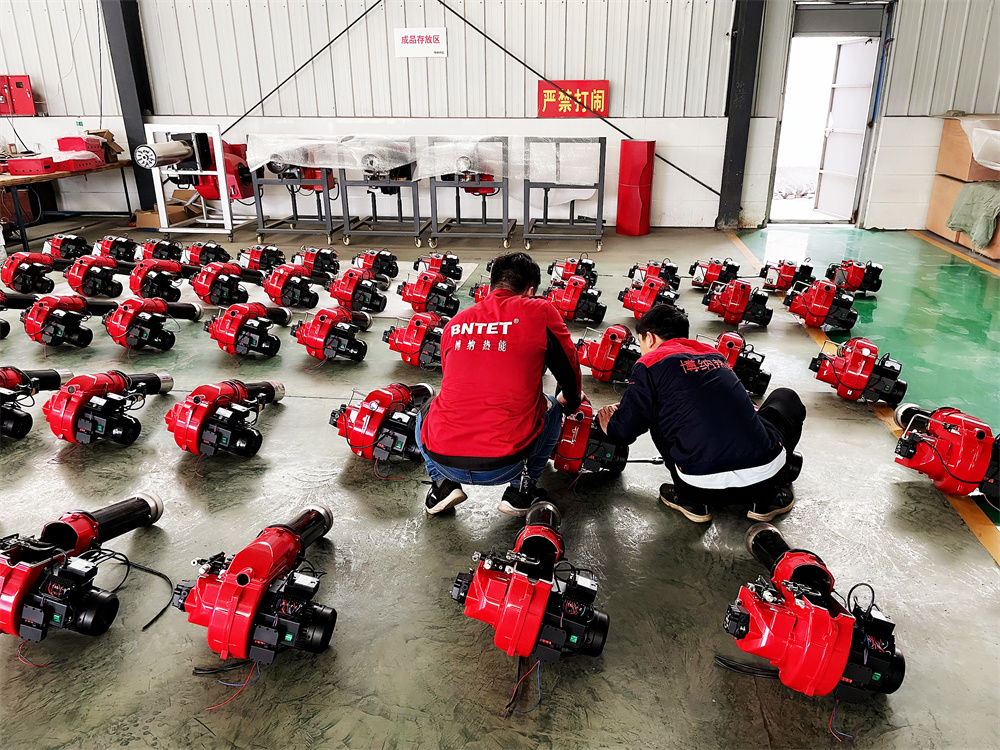The function of spare part of the natural gas liquefied gas city gas burner


Common burners include oil burners and gas burners. The fuel for gas burners includes natural gas, liquefied gas and city gas. The following mainly talks about the fuel of the gas burner and the function of spare parts.
Natural gas: Natural gas refers to gas fuel directly obtained from nature, that is, gas that is basically only mined and collected. The main component of natural gas is methane.
Liquefied gas: Liquefied gas is part of the hydrocarbons obtained as a by-product in the process of mining and refining petroleum. The main components of liquefied gas are propane, propylene, butane and butene. The liquefied gas is transformed from a gaseous state to a liquid state, and its volume is reduced by 250 times.
City gas: City gas refers to the gas produced through processing using coal as a raw material. Its main components are hydrogen, carbon monoxide and so on.
Gas burners can be divided into diffusion type, atmospheric type and flameless type according to the combustion method. Diffusion type: the air required for combustion is not pre-mixed with gas Atmospheric type: part of the air required for combustion is pre-mixed with gas Flameless type: all air required for combustion is pre-mixed with gas
Gas burners are divided into two types according to their adjustment methods: two-stage and proportional adjustment. The two-stage burner can only be divided into large fire and small fire; the proportional adjustment burner can work at any load point.
The composition of the gas burner: generally consists of a burner shell, a program controller, a fan, a servo motor, a gas butterfly valve, a combustion head, an ionization electrode or ultraviolet light, a flame stabilization plate, and a gas valve group (including ball valves, expansion joints, filters) , Pressure regulating valve, solenoid valve, ignition solenoid valve, etc.).
The function of each part of the burner: the burner shell is the carrier of each part, and many parts are fastened on the shell; the program controller is a device used to control the ignition program of the burner; the fan chamber drives the impeller to provide enough air for combustion The device; the servo motor is used to control the opening of the air damper and the opening of the gas butterfly valve, that is, to control the ratio of the air volume and the gas volume to achieve the effect of complete combustion; the ionization electrode and the ultraviolet light are combined with the oil burner The function of the electric eye is the same, it is used to detect the presence of flame, if the flame does not exist, it will protect the shutdown; there is a pair of ignition electrodes and gas nozzles on the combustion head, which output high-voltage ignition through the transformer to ignite the gas ejected from the nozzles; The flame-stabilizing plate is a device used to adjust the ratio of direct current and swirling wind; the ball valve in the gas valve group is a cut-off device to supply gas and cut off gas when not in use; expansion joints are used to reduce the production of gas valve groups when installed The filter is used to filter the impurities in the gas to prevent the impurities from damaging the equipment; the regulating valve can be used to adjust the gas pressure from the gas pressure regulator to make the pressure suitable for the gas consumption of the burner; the ignition solenoid valve is used to release the ignition gas Ignite the small fire first; the solenoid valve is opened when the ignition gas is ignited to release the main gas to ignite the main flame.
Burner operation program: After the burner is turned on, the output signal fan of the burner program controller starts to run, and the servo motor drives the air door to the full-load position for pre-purging. After the pre-purging, the servo motor drives the air door back to the ignition position. At this time, the ignition transformer The output high-voltage ignition electrode is ignited, and the ignition solenoid valve opens the branch gas at the same time. If the ignition is successful, the main solenoid valve opens to ignite the flame, and then the program will continue to change the size of the load according to the heat demand. If the ignition is not successful, the ionization electrode or If the electric eye cannot detect the flame, the program will be terminated, the solenoid valve will be closed, and no gas will be released into the furnace.